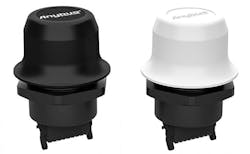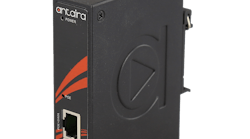Anybus Wireless Bolt CAN
The Anybus Wireless Bolt for CAN enables CAN-based, heavy-duty machinery and applications to transfer CAN data over a robust wireless link. Wireless communication is established either over a fast Wi-Fi connection or a reliable Bluetooth link. The CAN data is transported over a TCP/IP link which enables other standard Wi-Fi infrastructure to also connect to the wireless link if desired.
A typical use case is wireless access to CAN data from an industrial vehicle, such as a bulk material transport truck. For example, with the Anybus Wireless Bolt CAN, J1939 CAN data is easily communicated to a handheld tablet which gives the operator full control and visibility of the ongoing bulk material filling process.
Anybus Wireless Bolt CAN is fully transparent when it comes to transporting CAN data, meaning that it works with any CAN-based protocol, including CANopen. This opens the possibility to create mobile automation islands in any manufacturing process – the Anybus Wireless Bolt CAN will bridge the CANopen line wirelessly.
- CAN 2.0A/B (11/29 bit identifier) to wireless and TCP/IP conversion
- Supports e.g. J1939 and CANopen and transparent transfer of any CAN protocol
- Wireless communication using Wi-Fi or Bluetooth
- CAN cable replacement “CAN to wireless to CAN” using 2xBolts
- Wide baudrate support 10 kbps up to 1000 kbps
- Up to 28 freely customizable CAN receive pass-through filters
- Web-configuration over wireless or Ethernet LAN
- Available with white top Sunbolt enabling 30% higher surrounding temperature compared to black in direct sunlight
- Full compatibility with Anybus Wireless Bridge and Anybus Wireless Bolt Ethernet
- CLI (Command Line Interface) for configuration and diagnostics
- Individual baudrate support in a multi-node network





